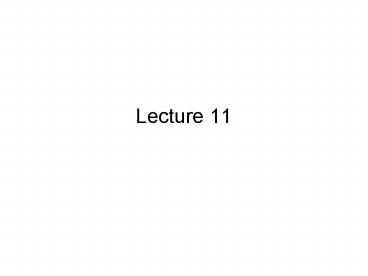A systematic way to develop the 4x4 matrix Tq' - PowerPoint PPT Presentation
1 / 116
Title:
A systematic way to develop the 4x4 matrix Tq'
Description:
Reverse displacement vector. Reverse displacement vector. Reverse displacement vector. Reverse displacement vector. Refer reversed displacement vector to B frame ... – PowerPoint PPT presentation
Number of Views:61
Avg rating:3.0/5.0
Title: A systematic way to develop the 4x4 matrix Tq'
1
Lecture 11
2
(No Transcript)
3
(No Transcript)
4
(No Transcript)
5
By substituting back
6
(No Transcript)
7
This product is the matrix required for problem 2
of HW4.
8
This matrix represents the robots forward
kinematics
9
(No Transcript)
10
Inverse of a homogeneous transformation matrix
11
Inverse of a homogeneous transformation matrix
12
Inverse of a homogeneous transformation matrix
13
Inverse
14
Inverse
15
Take transpose of rotation matrix.
16
Reverse displacement vector.
17
Reverse displacement vector.
18
Reverse displacement vector.
19
Reverse displacement vector.
20
Refer reversed displacement vector to B frame
21
Refer reversed displacement vector to B frame
22
Refer reversed displacement vector to B frame
23
(No Transcript)
24
(No Transcript)
25
(No Transcript)
26
(No Transcript)
27
(No Transcript)
28
(No Transcript)
29
Z-Y-X Euler Angles
30
Z-Y-X Euler Angles
- - Just three numbers are needed to specify the
orientation of one set of axes relative to
another.
31
Z-Y-X Euler Angles
- Just three numbers are needed to specify the
orientation of one set of axes relative to
another. - One possible set of these numbers is the Z-Y-X
Euler angles
32
Consider the A and B frames shown below.
33
How can we define just three quantities from
which we can express all nine elements of the
rotation matrix that defines the relative
orientations of these frames?
34
Beginning with the A frame, rotate a positive a
about the ZA axis.
35
Call this new frame B
36
Note the rotation matrix between A and B
37
Note the rotation matrix between A and B
38
Note the rotation matrix between A and B
39
Note the rotation matrix between A and B
40
Note the rotation matrix between A and B
41
Next consider just the intermediate B frame.
42
Consider a positive rotation b about the YB axis.
43
take the last rotation g to be about the XB
axis.
44
(No Transcript)
45
(No Transcript)
46
(No Transcript)
47
(No Transcript)
48
(No Transcript)
49
(No Transcript)
50
(No Transcript)
51
Is there a systematic way to build ?
52
Member i-1
53
(No Transcript)
54
(No Transcript)
55
(No Transcript)
56
(No Transcript)
57
(No Transcript)
58
(No Transcript)
59
(No Transcript)
60
(No Transcript)
61
(No Transcript)
62
(No Transcript)
63
(No Transcript)
64
(No Transcript)
65
(No Transcript)
66
(No Transcript)
67
(No Transcript)
68
(No Transcript)
69
(No Transcript)
70
Denevit Hartenberg parameters
71
Denevit Hartenberg parameters
72
Denevit Hartenberg parameters
73
Three constants
74
and one variable.
75
(No Transcript)
76
(No Transcript)
77
(No Transcript)
78
(No Transcript)
79
(No Transcript)
80
(No Transcript)
81
(No Transcript)
82
(No Transcript)
83
(No Transcript)
84
(No Transcript)
85
(No Transcript)
86
(No Transcript)
87
(No Transcript)
88
(No Transcript)
89
(No Transcript)
90
(No Transcript)
91
(No Transcript)
92
(No Transcript)
93
(No Transcript)
94
(No Transcript)
95
(No Transcript)
96
D-H Example
97
D-H Example
98
D-H Example Puma 560
99
D-H Example Puma 560
100
D-H Example Puma 560
101
First three rotations of Puma
102
First three rotations of Puma
103
i-11
104
i-11
105
The first rotation q1 occurs about the Z1 axis.
106
The second rotation q2 occurs about the Z2 axis.
107
However, the Z2 axis and the Z1 axis intersect
one another.
108
(No Transcript)
109
Therefore the X1 axis may be oriented arbitrarily.
110
Therefore the X1 axis may be oriented arbitrarily.
111
(No Transcript)
112
Since the two frames share their origin, a1d20
113
Since the two frames share their origin, a1d20
114
But what about a1?
115
But what about a1?
116
But what about a1?































